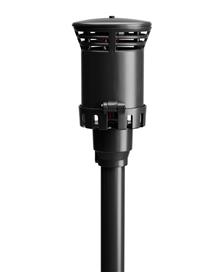The April showers thing did it’s job, May flowers are everywhere. It’s been a warmer than normal Spring. Depending on where you are, rainfall has been normal.
NOAH forecasts a warmer year. Drought forecasts show the Lake Erie region to be drier than normal through July. Overall, not a bad start to the season. We wish you the best for the year!
Edibles
 A few years back a marked increase in the use of edibles in the landscape created a new landscape offering. It appears that this trend just keeps going and growing. Now it seems there is a decent demand for raised garden plots, both for vegetables and flowering annuals. Landscape Architects are being asked to design them in high end residential properties.
A few years back a marked increase in the use of edibles in the landscape created a new landscape offering. It appears that this trend just keeps going and growing. Now it seems there is a decent demand for raised garden plots, both for vegetables and flowering annuals. Landscape Architects are being asked to design them in high end residential properties.
This is a neat trend; or do you say a return to an old staple? Edibles in landscape was normal for thousands of years. This was not so much for the landscape beauty (which was indeed cherished), but for food! Landscape features, such as planting beds, evolved from old fashioned vegetable gardens. Generations ago the raised beds provided a place to compost organic waste, which helped grow more vegetables. What goes around comes around!
Those Biting Menaces
The Zika virus last year and the West Nile in previous years has given some cause of concern, especially in southern areas. With it, a spike in mosquito control services has emerged.
How strong of a spike is it? Lawn and Landscape magazine did some surveying and interviews to find out. 200 landscapers responded nationwide. Of them 43 percent say they have been asked for mosquito control services.
Here in the Midwest, the concern isn’t about diseases. The concern is about the pesky little things biting people while trying to enjoy their outdoor living space. This concern also extends to ticks.

A few solutions are being offered. The first involves spraying to kill the offenders. Spraying is a controlled activity that usually requires some sort of licensing. Staff must be educated, pass an test, and you must assure they wear protective clothing. Of the 200 landscapers, 28% say they offer insect control, most are spraying.
Another alternative is chemicals that repel but do not kill. Most areas have no regulatory controls. An example of this is the Nutone system.
Nutone uses a 12 volt powered dispenser for Metofluthrin, a common commercially available mosquito repellent. The fixture looks like a landscape lighting fixture and can be powered by a landscape lighting transformer. Each will provide coverage up to 110 square feet. Cartridges of repellent are replaceable, each lasting up to 200 hours. Given about 2 hours per night usage, a cartridge will last 3 months.
Not a bad way to go. No poisons, easy to install, easy to use, non-intrusive, and effective. So far, local satisfaction has been high.
Who Will Do The Work?
This is a question asked by Landscape Contractor magazine and many in the industry. Construction is expected to be strong and growing for several years. Already the lack of labor to do the work is hindering contractors of all types. Competition for available laborers is fierce.
In 2011 the National Association of Home Builders (NAHB) surveyed members and found 30% reported difficulty in finding labor. In 2016, the number was 82%. This may not be surprising for some, as you are facing this struggle.
LC magazine does say we have record numbers of people out of the workforce. However, the competency and attitude of many of those folks renders them of little value to the construction trades. Unfortunately, labor will be a big issue for many years.
What can contractors do? The only suggestions right now are to take active roles in attracting and educating young people to join our traders. Not an easy task because many young people seem apathetic to the landscaping industry. But efforts are underway. Help by volunteering your time!
Low Ballers
 Lawn and Landscape magazine surveyed on the effect on low price competitors. Of course everyone can guess what the majority of the 600 responding landscapers had to say, low ballers bite.
Lawn and Landscape magazine surveyed on the effect on low price competitors. Of course everyone can guess what the majority of the 600 responding landscapers had to say, low ballers bite.
But most replied that they have at times decided to be the low priced bidder. Those interviewed say those times are only done for a strategic reason. Many said they started their business being a low baller to gain some traction. Of them, 74% said they raised their prices within 1-3 years.
So it is agreed that there will be time, for a handful of good reasons, to offer a low price. However, that must be controlled. Also agreed is there are two type of low ballers; entry level guys trying to get started who raise their prices later and the evil ones who just don’t care and cut corners to make a dime.
A few contractors said low ballers are good for them. Their existence causes them to keep evaluating how they do business, so their strategic advantage is clear and valuable. Others said low ballers helped their business because the low ballers shoddy work made it easy to contrast their high quality work.
Good installers sales message is hire us and pay for what you want once. Go with the low baller and pay once to get their installation and again later to get it fixed to be what you want. Why waste the money and deal with the hassle?
Many reported they have burned themselves dropping prices. Often finding they lost money on the job and educated their customer they are willing to drop their price.
Also appearing in the survey is the data from homeowners about why they switched service providers. In order; Lack of communication, inconsistent pricing, and low quality work. It appears that being good at these aspects might be a better business plan than simply cutting prices.
Huston’s Advice on Labor Costs
 Jim Huston is well known among landscape tradesmen. For years he has taught how to price work to make money. He offered a warning in Lawn and Landscape magazine about labor costs and job pricing.
Jim Huston is well known among landscape tradesmen. For years he has taught how to price work to make money. He offered a warning in Lawn and Landscape magazine about labor costs and job pricing.
First, labor costs are going up. There are many reasons why, but they are. Labor is huge part of the cost for a job. And, second, contractors are not raising prices enough to cover the increased labor cost.
Jim says, “Field labor, due to its volatility, is responsible for roughly 80 to 90% of the risk in business operations.” Continuing with, “If your company is going to be profitable, you have to control labor productivity and its cost.”
He gives a quick calculation to show his point, but says more detailed calculations are necessary to cover all the differences between companies. The quick formula is; customer labor rates should be around three times the average hourly labor cost. So if a crew has an average hourly cost of $19.33, the labor rate charged the customer should be $58 per man hour.
Bottom line, since labor costs are generally up $1 to $3 per hour, job labor should be going up $3 to $9 per hour. Here’s the other kicker, focus on productivity too. In other words, how many of the labor hours you are paying for are actually earning you income? I’ve heard many stories of shock from owners who did a detailed evaluation and found they only get paid for 2/3rds the hours they are paying for. Profit booster formula seems to be raise your labor rates and get more revenue generating hours.












